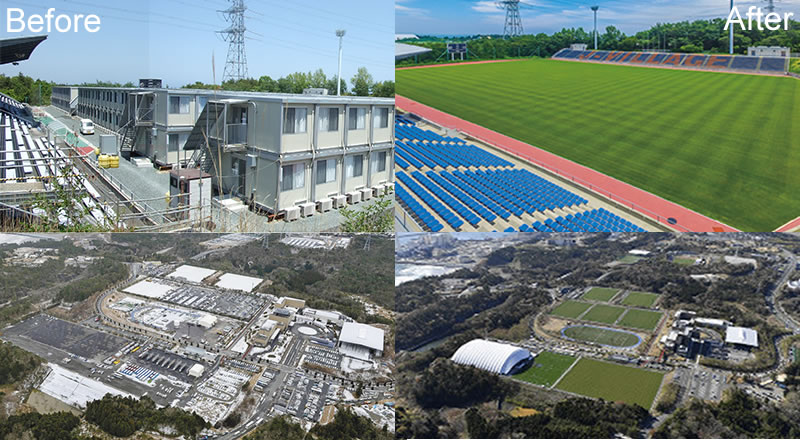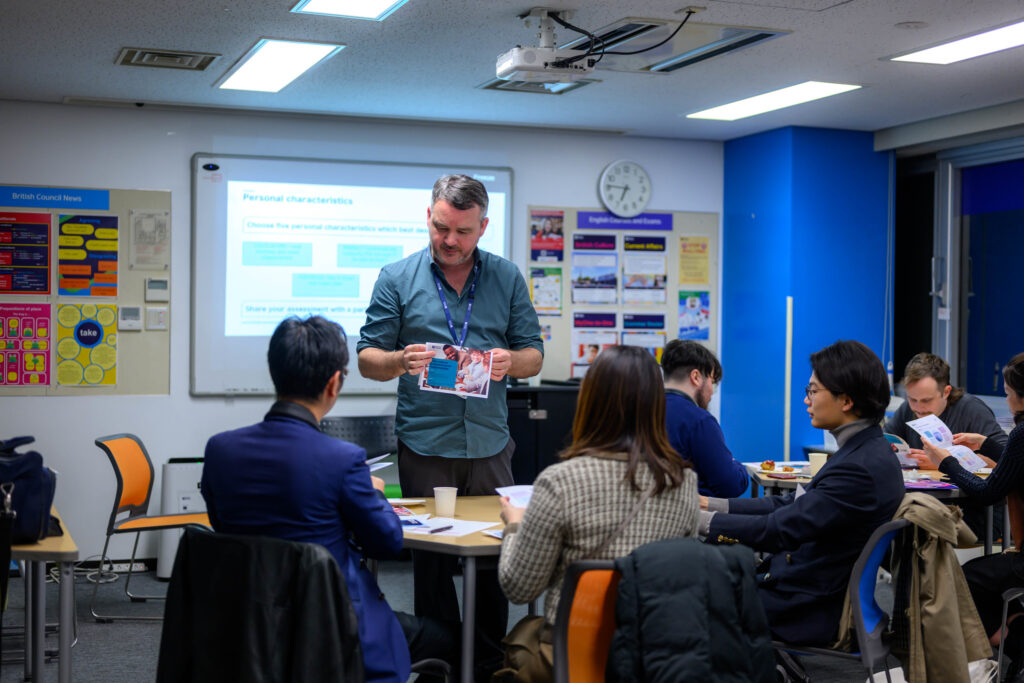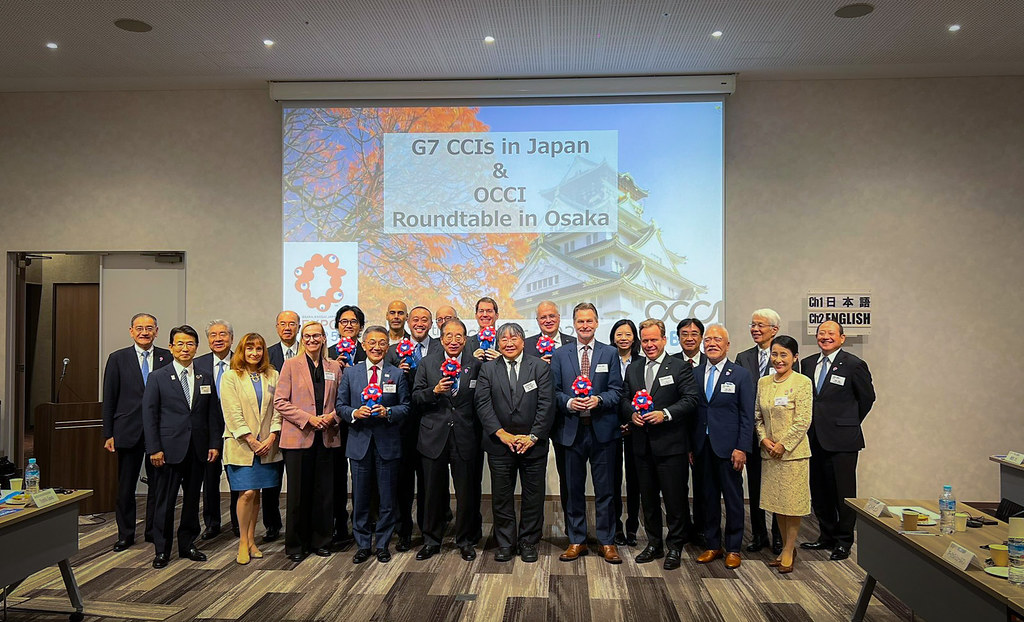Member? Please login
TOHOKU WEEK | Day 4 | Fukushima

Written by BCCJ
July 15, 2021
Community and Business, Featured Article, UK-Japan Relations
- About Fukushima
- Fukushima in Perspective
- 10 Years On
- Ambassadors of Reconstruction
- Economy
- Fukushima Innovation Coast Network
- Suzuki Sake Brewery
- J-village and Recovery through Sport
- Investing in the Community
- Community Intern Scheme in Koriyama
- Home For All
- Delve deeper into Fukushima…
- Local Business Directory
- Coming Up
About Fukushima
Fukushima (福島県, Fukushima-ken) is the third largest of Japan’s 47 prefectures (after Hokkaido and Iwate) and stretches over 150 kilometres from the Pacific coast into the mountainous interior of northeastern Honshu. It is home to around 1.8m residents.
Just over an hour by shinkansen from Tokyo, Fukushima offers a range of attractions including famed onsen, high-quality produce, outstanding cherry blossom spots, and even powder-covered mountain slopes. The fertile lands of the prefecture produce some of Japan’s best rice and sake, and its pristine wilderness and volcanic landscapes are simply breathtaking. Fukushima Prefecture is also home to Japan’s first ever theme park, the Spa Resort Hawaiians.
Fukushima in Perspective
The Great East Japan Earthquake and tsunami of 2011 devastated the coastal areas of Fukushima prefecture and in turn caused a nuclear incident at the Fukushima Daiichi Nuclear Power Plant (FDNPP) which forced tens of thousands of residents to evacuate.
In post-3/11 travel and tourism communications, it has been crucial to highlight the size of the prefecture.

What local people are keen to share with the wider world is that the no-entry zone around the FDNPP makes up less than 3% of the prefecture’s total area. Over the past 10 years, even inside most of the no-entry zone, radiation levels have dropped far below the levels that airplane passengers are exposed to at cruising altitude.
In the nuclear incident, large areas of western Fukushima in particular escaped much contamination, including the mountainous interior around the historic city of Aizu-Wakamatsu (where the BCCJ’s B2B Initiative for Tohoku was pleased to set up a community centre in 2011, in association with member company KVH). In most of the eastern parts of the prefecture, radiation levels have by now decreased to pre-2011 levels due to natural decay and decontamination efforts.
In short, Fukushima is safe for tourists to visit.
Fukushima 10 Years On
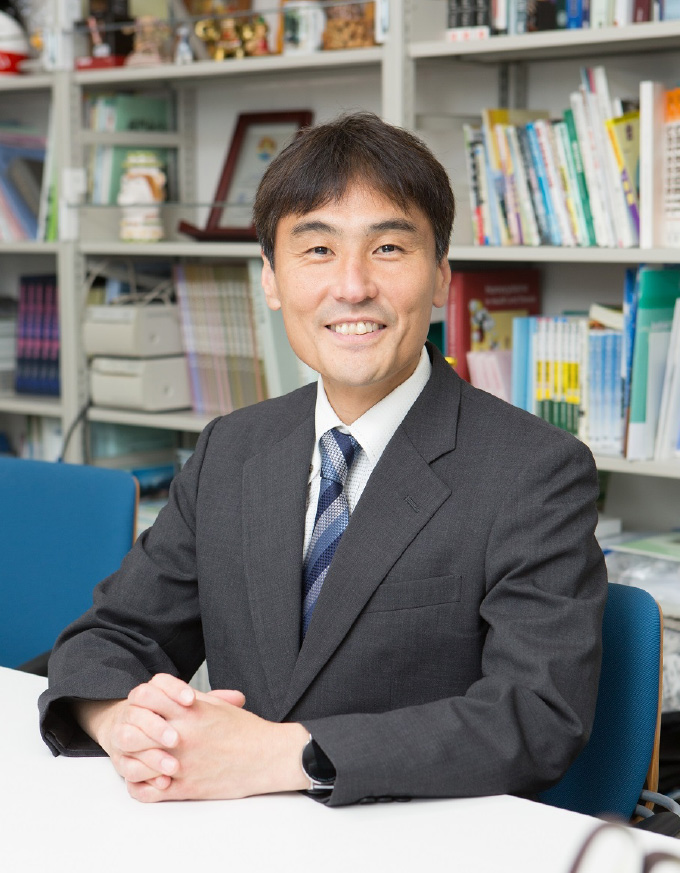 Great East Japan Earthquake and Nuclear Disaster Memorial Museum
Great East Japan Earthquake and Nuclear Disaster Memorial Museum
The Great East Japan Earthquake and Nuclear Disaster Memorial Museum, opened in September 2020. Noboru Takamura was appointed as the Director on April 1 2021.
He says, “10 years have passed since the accident at TEPCO’s Fukushima Daiichi Nuclear Power Station. In this time, Fukushima Prefecture has directly faced the extremely challenging mission of rebuilding itself after earthquake, tsunami, and nuclear disaster. The Memorial Museum (. . . ) aims to collect, store, and display as archives the evidence of Fukushima’s struggle toward recovery. We hope the museum can act as a base where knowledge can be shared – a place where people from both within and outside Japan can learn about a vast range of knowledge that has been gained from Fukushima’s past and will continue to be gained in its future. I also hope that the museum can play an active part in the Fukushima Innovation Coast Framework. Together with my staff, I am looking forward to meeting our many visitors.”
Ambassadors of Reconstruction
In February 2021, the Fukushima Ambassadors of Reconstruction (ふくしま復興大使) published a video explaining the rebuilding of Fukushima and conveying their gratitude to the received support and aid.
Economy
Most of the current research on Fukushima’s post-disaster economic recovery inevitably focuses on just one aspect of the wider prefectural economy (energy). Still, there are 3 other industries considered to be key considered to revitalisation and development in disaster recovery plans of the country: manufacturing, agriculture, and tourism. These industries have been identified as having the potential to provide sustainable livelihoods for Fukushima’s residents and show “creative recovery”—innovation in adapting to the post-disaster environment.
Fukushima Innovation Coast Network
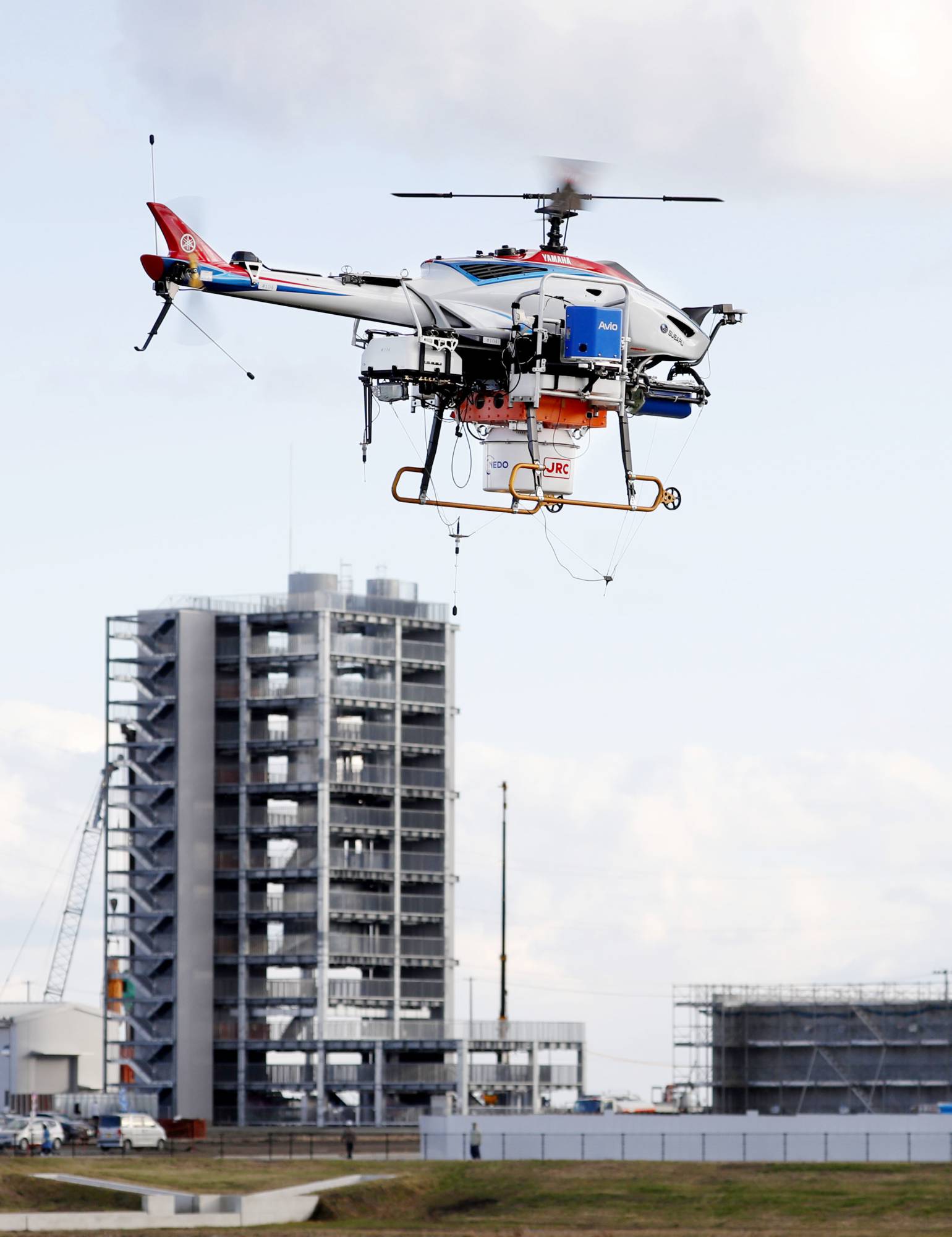 The FICN is an initiative led by national and prefectural governments, investing in the industries of robotics, green energy, agriculture, nuclear power station decommissioning, and forestry & fishery management, focused on the coastal regions of Fukushima. The initiative brings cutting-edge technology and research facilities together, to create opportunities for education and employment in areas that were most affected by the disasters.
The FICN is an initiative led by national and prefectural governments, investing in the industries of robotics, green energy, agriculture, nuclear power station decommissioning, and forestry & fishery management, focused on the coastal regions of Fukushima. The initiative brings cutting-edge technology and research facilities together, to create opportunities for education and employment in areas that were most affected by the disasters.
In 2018, Kyoto textile company Mitsufuji, opened their latest factory in Kawamata Town, Fukushima, through the initiative.
There is financial support available for companies partnering with local firms on projects that bolster regional development. To find out more, and for other examples of the Initiative’s success stories, visit here. If your company would like to get involved, email the Fukushima Revitalization Group, METI at fukushima-kouhou@[email protected] or send an inquiry from this page.
https://www.fipo.or.jp/en
Suzuki Sake Brewery
Suzuki Sake is a brewery that focuses on producing sake made from local Fukushima rice, which significantly dropped in value in the aftermath of 3/11. Originally based in Namie town the brewery was forced to relocate to Yamagata Prefecture post-disaster and is currently in the process of relocating back to Namie.
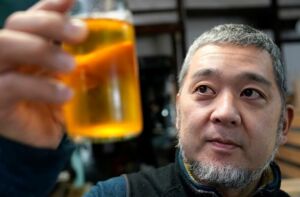
Daisuke Suzuki head of the Brewery says, “Two months after the disaster in May 2011, bereaved families were allowed to return for a few hours to the town and set up alters. And at this time the sake of Suzuki Sake Brewery, which by some miracle was still left, was made in offering. Evacuated residents also raised their voices “some how please make your sake, please allow something of Namiecho to remain”, and these words helped my heart to restart sake production. Until then I had freely thought that as sake is something that I make, it is something which belongs to me. However local people gathered their sake decanters and placed them at my place, they gave me much support and I came to strongly realize that the sake that has been made is something which truly belongs to everyone. The identity of local people has been shaken and those who are involved with my sake have made many sacrifices. Only I am able to make this sake, and through this making I hope to be a testament to the lives which have been lost. I also want to give evidence through the production of sake of my own existence.”
You can connect with, donate to and support the brewery here.
Featured in Mainichi HERE
J-village and Recovery through Sport
We are delighted to see that J-village – a sports complex in Naraha town, one of the former evacuation areas located 20 kilometres south of Fukushima Daiichi Power Plant – has reopened. Soon after the nuclear disaster, this sports complex became the front line base for the anti-nuclear accidents for Japanese Government. Self Defence Force, fire fighters and thousands of clean-up workers and experts had been staying in this place and going into the Power Plant to tackle on the hydrogen explosions, meltdowns of the reactors and the ongoing decommissioning and decontamination for the site until 2013. J-Village finished the role of anti-nuclear disaster front line in November 2016 and began renovation After several year cleaning and renovation works, J Village is now back to its roots as a sports complex for those who love soccer and sports and has become a symbol of the revitalisation of Fukushima. Tokyo 2020 Olympic flame began its journey from this place, on March 26 2020, lighting its way across Japan’s 47 prefectures. Congratulations to the J-village team and all involved in this historic reopening.
Investing in the Community
Fukushima is ideal for businesses looking to invest because of its unique characteristics and strong spirit of collaboration that sees local competitors work together for the benefit of the community. At a BCCJ and RSA Japan Fellows’ Network event earlier in the year, participants discussed how to bring investment into local projects and the impact that can have for both parties involved.
Investment by corporates in local projects can have a vast and wide-ranging impact on all involved, said Zoe Vincent, project manager at Fulford Enterprises. Vincent, who formerly promoted Fukushima to overseas markets as a tourism destination following the triple disaster that devastated Tohoku in 2011, shared how the prefecture continues to benefit from the support of urban-based businesses.
“Through international tourism campaigns, the prefecture has been rebuilding its image, but some misunderstandings about safety remain, even in Japan. Investment makes a big difference to individuals or communities affected by stigma, especially in agriculture, as we need to repair the image of products.”
Local businesspeople shared their ongoing efforts to revitalise Fukushima’s business landscape. Jun Yamada, CEO at Aizu Electric Power Company, shared his experience of setting up a solar plant after the 2011 disaster. Comprising about 50 solar panels, the enterprise is small, but plays a critical role in the community by providing local, community-driven, clean energy to support the regeneration of the business ecosystem. The company is now diversifying into areas that include wine-making.
Koki Kawauchi, Director of Fukushima Ouse Winery in Osemachi, Koriyama City, spoke about his own determination to “sweep away the reputational damage to Fukushima’s fresh produce as a result of the disaster.” Ouse Winery is operated by Mitsubishi Corporation, and offers Kawauchi, a Koriyama native, an opportunity to showcase some Fukushima products. There were no established vineyards when Mitsubishi Corporation started the initiative a few years ago, but now the winery collaborates with 13 local wine makers. The winery’s output is 70,000 bottles annually, including brandy and cider, which has received several awards.
Read more HERE
Community Intern Scheme in Koriyama
BCCJ member Adam Fulford, CEO of Fulford Enterprises, has designed a system of corporate engagement with communities in rural Japan that generates a genuine and positive ESG impact. He is also quickly growing a network of bilingual local representatives, including “community interns”, to facilitate corporate engagement in villages in Fukushima, Yamagata and other locations.
Adam is currently eager to hear from any BCCJ member that would like to discuss involvement in a “Kids’ Farmers Market” in Fukushima later this year.
Home For All
After the events of 3/11, Soma city was facing not only the loss and damage of many homes but also the concern about high background radiation levels, particularly for children to play outdoors. Soma Children’s House is the Home-for-All building located closest to the damaged power plant.
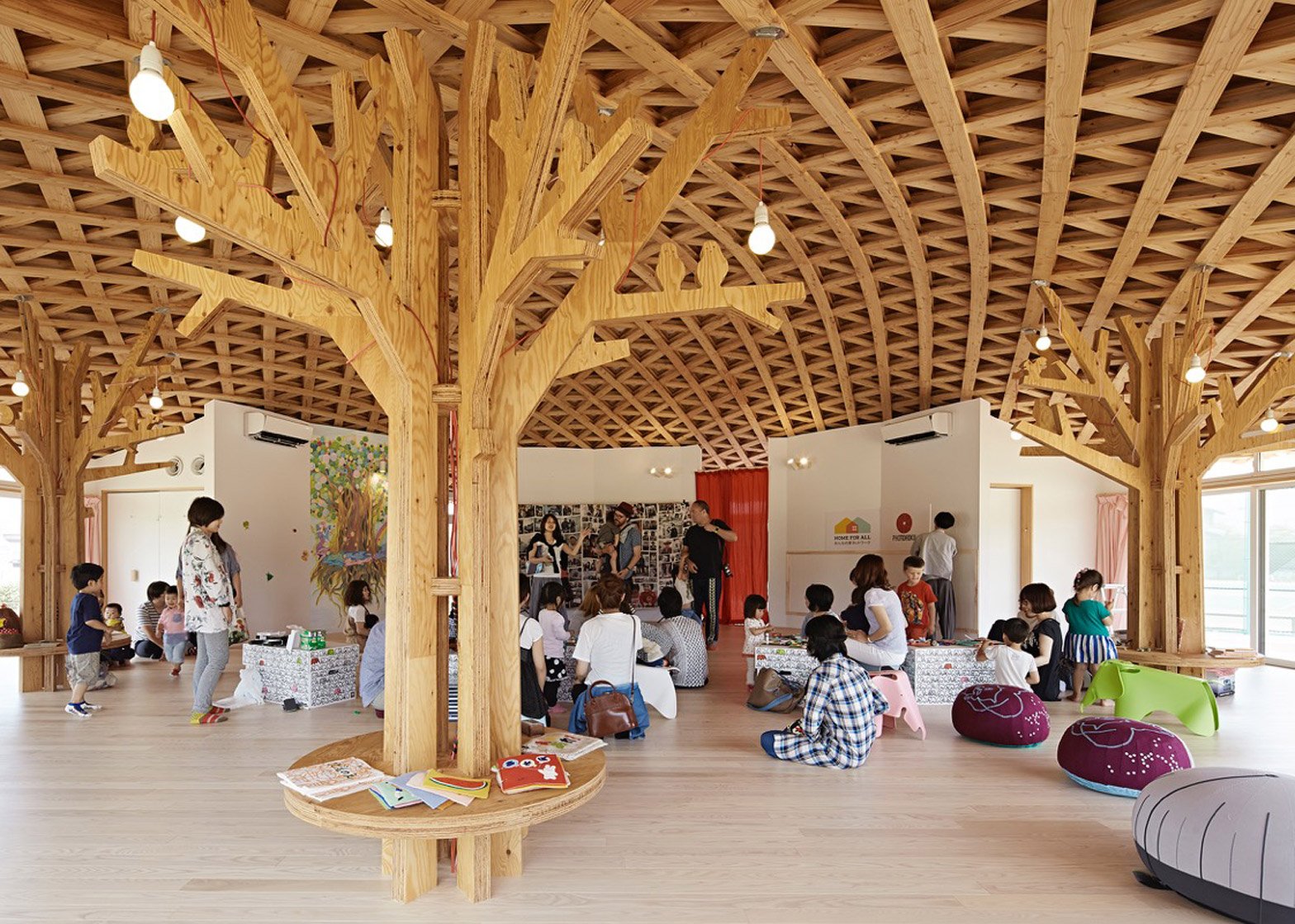
Designed by BCCJ member company Klein Dytham Architecture (KDA), the project was brought to life in collaboration with T-point Japan and their generous donations through the T-Point card system. All professional work was undertaken pro bono.
Long slabs of 20×120 mm larch wood are stacked in 9 layers at an angle of 60 degrees to form a woven ceiling. The space under this ‘straw hat’ held aloft by 3 tree shaped pillars, with motifs of birds and squirrels, became a park within a park – a safe indoor playground with circular plan where kids can run freely and play with friends. Lively red and white facade is made to create an excitement and bring joy. It is like a circus traveling through the town setting up its stripy patterned tent in the middle of the park. Soma Children’s House is still very much in use, with over 400 children and parents using it each week.
KDA are continuing to support the 17 “Home-for-All” community shelters that were built, and are always open to more support. To donate or join membership to directly support these ongoing projects, visit: http://www.home-for-all.org/supportus
Support Coastal Community Organisations
Hula Okami, Tatakiage Japan, Iwaki Tourism Labo…
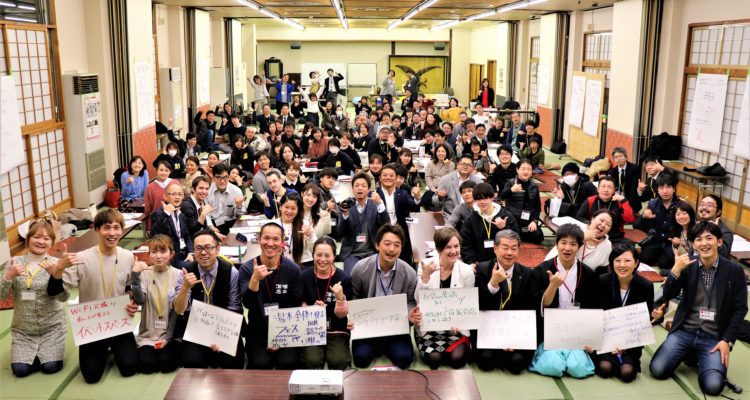
BCCJ member Jayne Nakata writes, “I have been living in Iwaki City, Fukushima for nearly 20 years and experienced the triple disaster in 2011. I have since been working with various community organisations such as Hula Okami, Tatakiage Japan and Iwaki Tourism Labo, Iwaki City to try and make our neglected part of Fukushima known as a tourist destination. I would love for Tohoku Week to represent the coastal areas of Fukushima that are often missed out of promotional materials. If anyone would like to get in contact with ideas to support these organisations, please email the BCCJ at [email protected]
Delve deeper into Fukushima…
Real Fukushima Tour
The Fukushima Prefectural Government in association with J Village and The Lantern House offer tours of coastal Fukushima and provide local views on the nuclear incident, and how it affected – and continues to affect – local people. These tours begin with local guides meeting visitors at Odaka station, and a sample tour includes visits to: rural villages in Odaka where the evacuation order was lifted in July 2016 and meet local returnees; abandoned rice fields where contaminated soil bags occupied; a cow farmer who declined to evacuate, an abandoned pottery village and the tsunami memorial sites in Namie; local hill to see Fukushima Daiichi Nuclear Power Plant and know what decommission is about; abandoned area and learn silent damage of the accident and difficulties of then-residents; new town center of Ohkuma where the town hall, apartments and shopping mall are being built. It is hoped that the Real Fukushima tours can resume once COVID-19 restrictions have eased.
Futaba Town Tour
Tatsuhiro Yamane, 35, is the organizer behind newly-launched tours of Futaba – Fukushima’s only municipality where all residents continue to be evacuated due to the 2011 nuclear disaster. The tours began on June 19 2021 and will be held about once a month, in both Japanese and English. Participants can walk around this northeastern Japan town, which houses the Fukushima Daiichi Nuclear Power Station, in small groups.
Since spring 2020, people have been allowed to enter part of the town, including the place around JR Futaba Station on the Joban Line, and evacuated residents are set to return to the town in the spring of 2022. Yamane said, “I hope that the tour creates an opportunity for new connections to arise.” The next tour is scheduled to be held on July 17 from 11:30 a.m. to 4 p.m.
Futaba Town Tour
Local Business Directory
-
Matsunaga Kiln – family-owned Soma Yaki pottery business that had to restart business from scratch post 3/11 in a different area of the Prefecture. Their son now works on producing contemporary-style Soma Yaki, and has gone abroad to promote the business.
-
Michi-no-Eki – below are two Michi-no-Eki that opened in places previously listed as ‘Restricted Areas’ – they sell local produce and goods, and share information about the local area.Madeikan Michi-no-Eki (Iitate Village)Namie Michi-no-Eki (Namie Town) *Suzuki Sake & tastings, as well as Obori Soma Yaki pottery workshops are available here
-
Aizu Urushi Tour – a tour of artisan’s workshops involved in Aizu Wakamatsu’s lacquerware industry (English guide available)
- MUSUBU – creative community activation project, which aims to revitalize the towns of Fukushima through connecting people, communities, information, design, and industries. Support the project directly by purchasing homemade cards, stickers and tote bags from their online shop.
- Sakomoto Coffee – recommended by local BCCJ member, as the best coffee shop in Fukushima!

Further inside knowledge from Fukushima resident and BCCJ member Jayne Nakata about her favourite restaurants/ryokans and sightseeing spots in Yumoto Onsen, just two hour by fast train from Tokyo Station:
- Ryokan Koito
- Iwaso Ryokan
- Furutakiya Ryokan (13 generations have owned this ryokan)
- Yumoto Onsen Shrine (1300 year history, one of the three oldest shrines in Japan )
- Bar Maitai
- Iwaki Football Club Park
- Seven bays of Iwaki restoration cycle route (Over 50 km of cycling along the bays destroyed in 2011 tsunami, now reconstructed)
Coming up . . .
What have we learned so far?
- Day 1 – Opening (July 12 2012)
- Day 2 – Miyagi (July 13)
- Day 3 – Iwate (July 14 2021)
- Day 4 – Fukushima (July 15 2021) THIS PAGE!
- Day 5 – Tohoku of Tomorrow (July 16 2021)
We hope you will join us for the final day of Tohoku Week tomorrow, where we will share highlights of the week, offer thoughts on further ways to support and engage with local businesses and communities in Tohoku, and will hear from Her Majesty’s Ambassador to Japan, Julia Longbottom.
If you have any connections to stories, people, or businesses from the region, we’d love to include these in communications going forward; please do get in touch.

